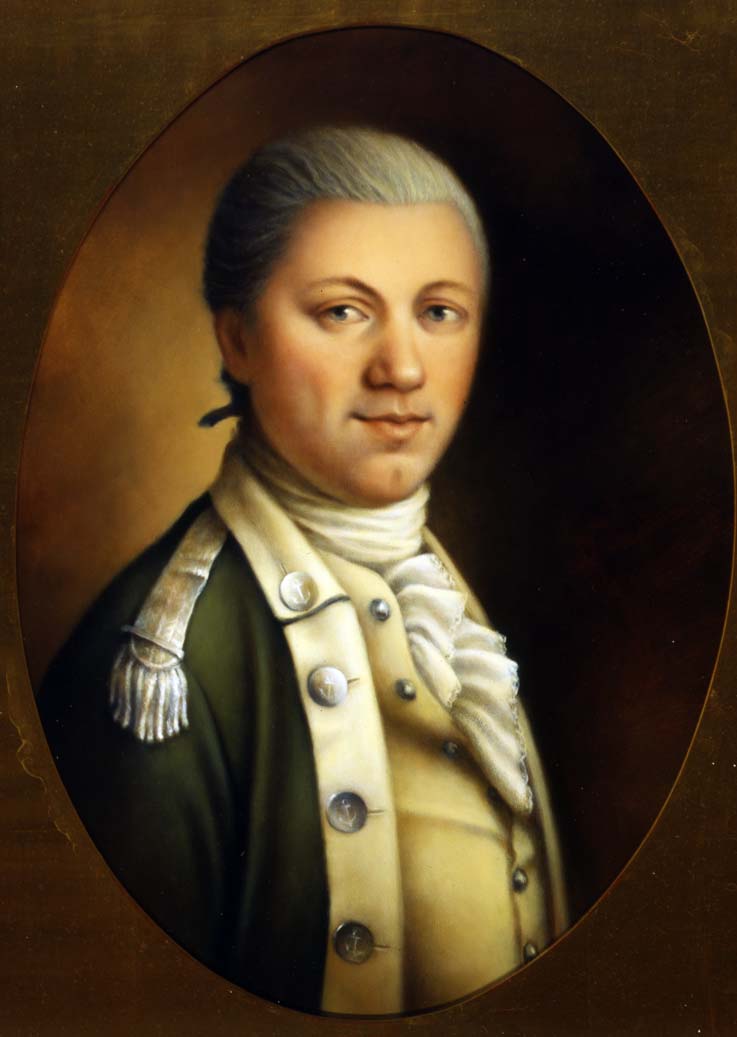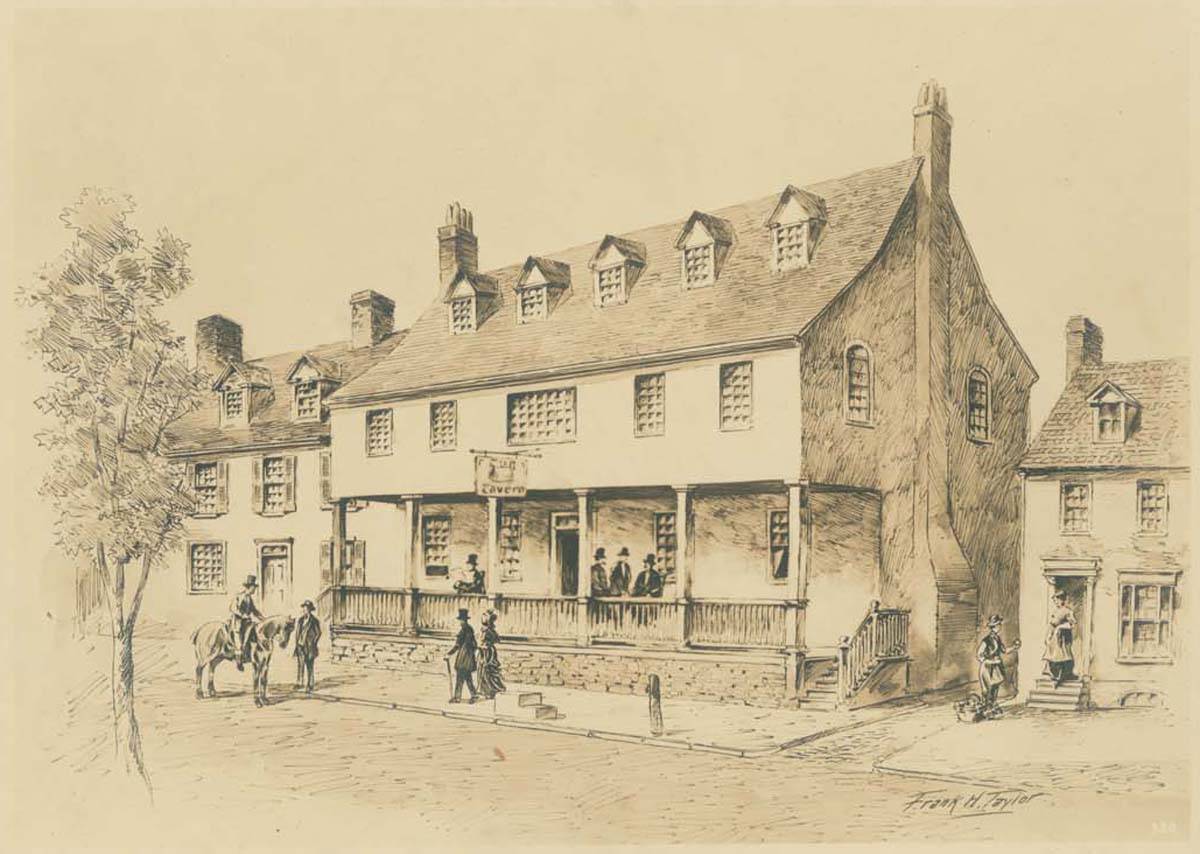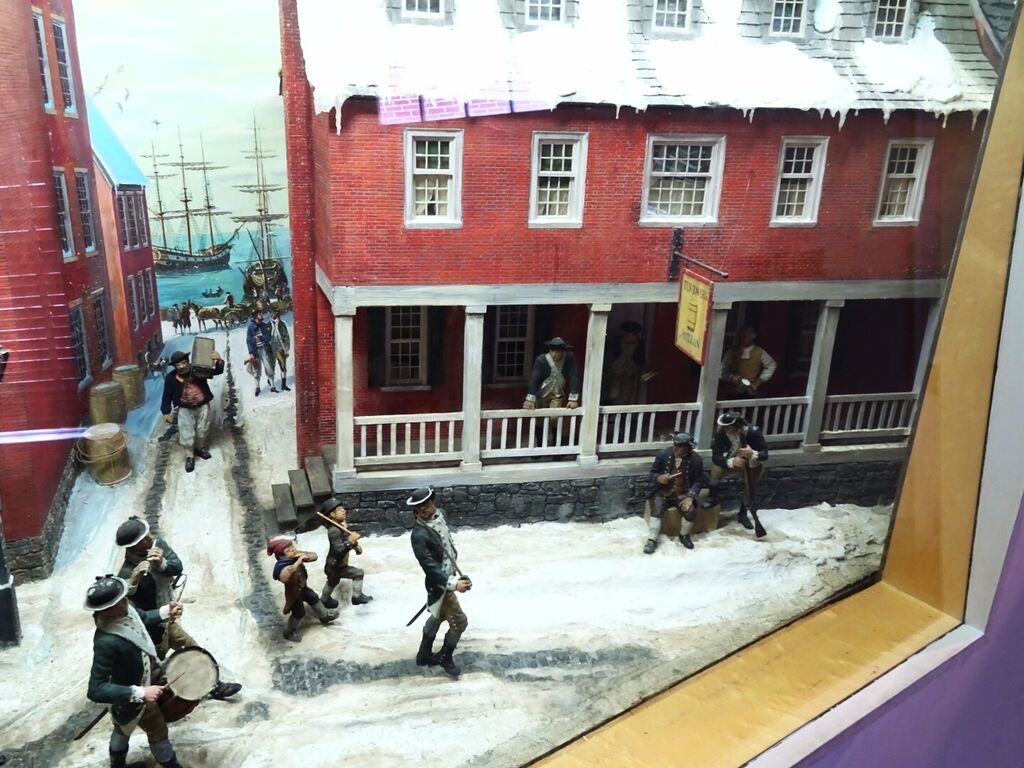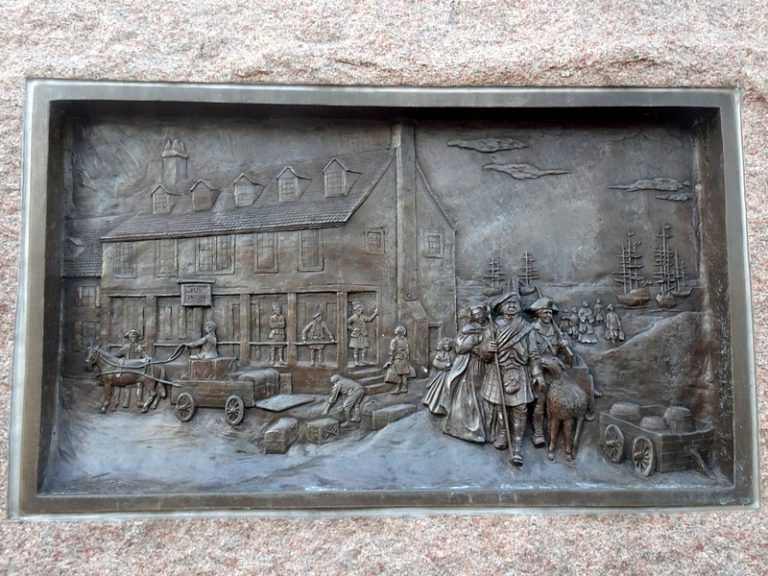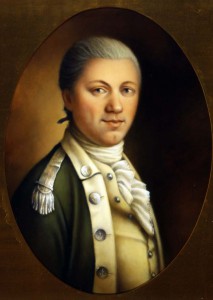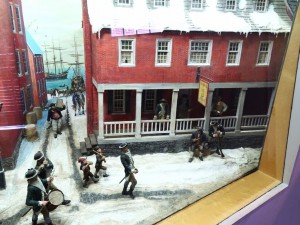Tun Tavern
Essay
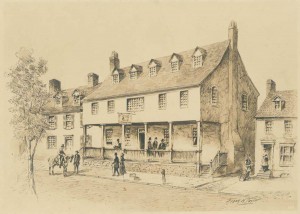
For nearly a hundred years from 1693 to 1781, Tun Tavern served residents and visitors of Philadelphia near the Delaware River waterfront with food, spirits, and sociability. Also a meeting place for social and military organizations, Tun Tavern is best remembered as the “birthplace” of the United States Marine Corps. Its patrons included such noteworthy Americans as Benjamin Franklin (1706-90), John Adams (1735-1826), and two of the first Marine officers: Samuel Nicholas (1744-90) and Robert Mullan.
Founded at the corner of Water Street and Tun Alley by Joshua Carpenter in 1693, the three-story Tun Tavern derived its name from the Old English word “Tun” for keg or barrel of beer. Conveniently located near Philadelphia’s riverfront wharves, Tun Tavern became popular among seafarers and others who supported the city’s maritime industry. Over the years, Tun Tavern played host to groups such as the St. George’s Society, which assisted needy Englishmen arriving in Pennsylvania, and the St. Andrew’s Society, which aided needy Scots. St. John’s Lodge No. 1 of the Grand Lodge of the Masonic Temple held its first meetings at Tun Tavern in 1732. In the 1740s, proprietors Thomas and Margaret “Peg” Mullan added “Peggy Mullan’s Red Hot Beef Steak Club” to the tavern’s name.
Tun Tavern’s first associations with American defense occurred in the decades prior to the American Revolution. In 1756, with Pennsylvania colonists in conflict with Native Americans on the frontier, Benjamin Franklin used Tun Tavern as a recruiting point for the Pennsylvania Militia. Beginning in the fall of 1775, the Naval Committee of the Continental Congress, whose members included John Adams, met several times at Tun Tavern to discuss naval and maritime affairs and plan operations for the fledgling Continental Navy.
The tavern gained its status as “birthplace” of the Marine Corps because of its role in recruiting the American colonies’ first Continental Marines, which the Continental Congress authorized on November 10, 1775. As captain for the new Marines, Congress appointed Samuel Nicholas, proprietor of the Conestoga Wagon Inn. Nicholas in turn called upon his friend Robert Mullan, the son of Thomas and Peg Mullan and co-proprietor of Tun Tavern, for assistance in recruiting men to serve. Robert Mullan, commissioned as a first lieutenant, logically selected his place of business as the Marines’ recruiting station.
Marines to the Bahamas
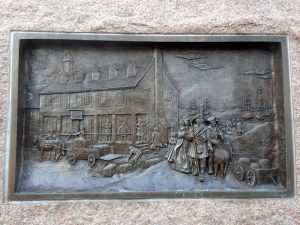
Although Congress authorized two full battalions of Marines, no formal battalions were ever established but provisional units were established as needed. The first Marines recruited for service at Tun Tavern were intended to support a naval expedition to Nova Scotia. However, their mission was changed to raiding the Bahamas Islands to capture weapons, supplies, and munitions from British garrisons. Under the command of Commodore Esek Hopkins (1718-1802), this expedition consisted of eight hastily armed and equipped ships and approximately 250 Marines, including Nicholas and Mullan. After departing Delaware Bay in February 1776, in March the expedition conducted an amphibious assault on New Providence Island in the British Bahamas. Under the command of Nicholas, 220 Marines and sailors captured Forts Nassau and Montague, Nassau’s Government House, and the town of Nassau. They occupied New Providence Island for two weeks and then withdrew, taking with them a great quantity of munitions and guns desperately needed by George Washington’s Continental Army. Nicholas and his Marines later participated with the Continental Army in the Second Battle of Trenton, the Battle of Princeton, and the winter encampment at Morristown.
Tun Tavern continued to serve as a recruitment station for Continental Marines throughout the War for Independence. Although destroyed in a fire in 1781, the same year that the British surrendered to the Americans at Yorktown, the tavern continued to be remembered as “Birthplace of the Marine Corps.” In the 1920s, a commemorative plaque marking the site and its significance to the Marines was placed on the Merchants Warehouse, a massive building constructed around 1905 on the block bounded by Chestnut Street, Delaware [now Columbus] Avenue, Water Street, and Walnut Street.
Construction of Interstate 95 in the 1970s destroyed the Merchants Warehouse and left the site of Tun Tavern buried beneath the highway just south of the Benjamin Franklin Bridge. In the mid-1970s, the Marine Corps Reserve Officers Association and the Marine Corps Memorial Foundation proposed building a reproduction of Tun Tavern in a park at Penn’s Landing near the original site, but the plan never came to fruition. Philadelphia lacked a marker for the site of Tun Tavern until November 10, 2005–the 230th birthday of the Marine Corps–when the Pennsylvania Historical and Museum Commission dedicated a new marker on Front Street between Chestnut and Walnut Streets.
Over the years, Tun Tavern has been commemorated in various ways. Atlantic City boasts the Tun Tavern Restaurant and Brewery. The National Museum of the Marine Corps in Triangle, Virginia, near Quantico, includes a reproduction of Tun Tavern that sells food and spirits. The New Hall Military Museum of Independence National Historical Park includes a diorama depicting Tun Tavern. Although the original site of Tun Tavern lies buried beneath Interstate 95, its legacy lives on as the “birthplace” of the U.S. Marine Corps.
Bryan J. Dickerson is a military historian from Gloucester County, New Jersey. He holds a B.A. in History from Rowan University and an M.A. in American History from Monmouth University. He is a Navy veteran of Operation Iraqi Freedom who deployed twice as a member of the 2nd Marine Aircraft Wing. (Author information current at time of publication.)
Copyright 2015, Rutgers University
